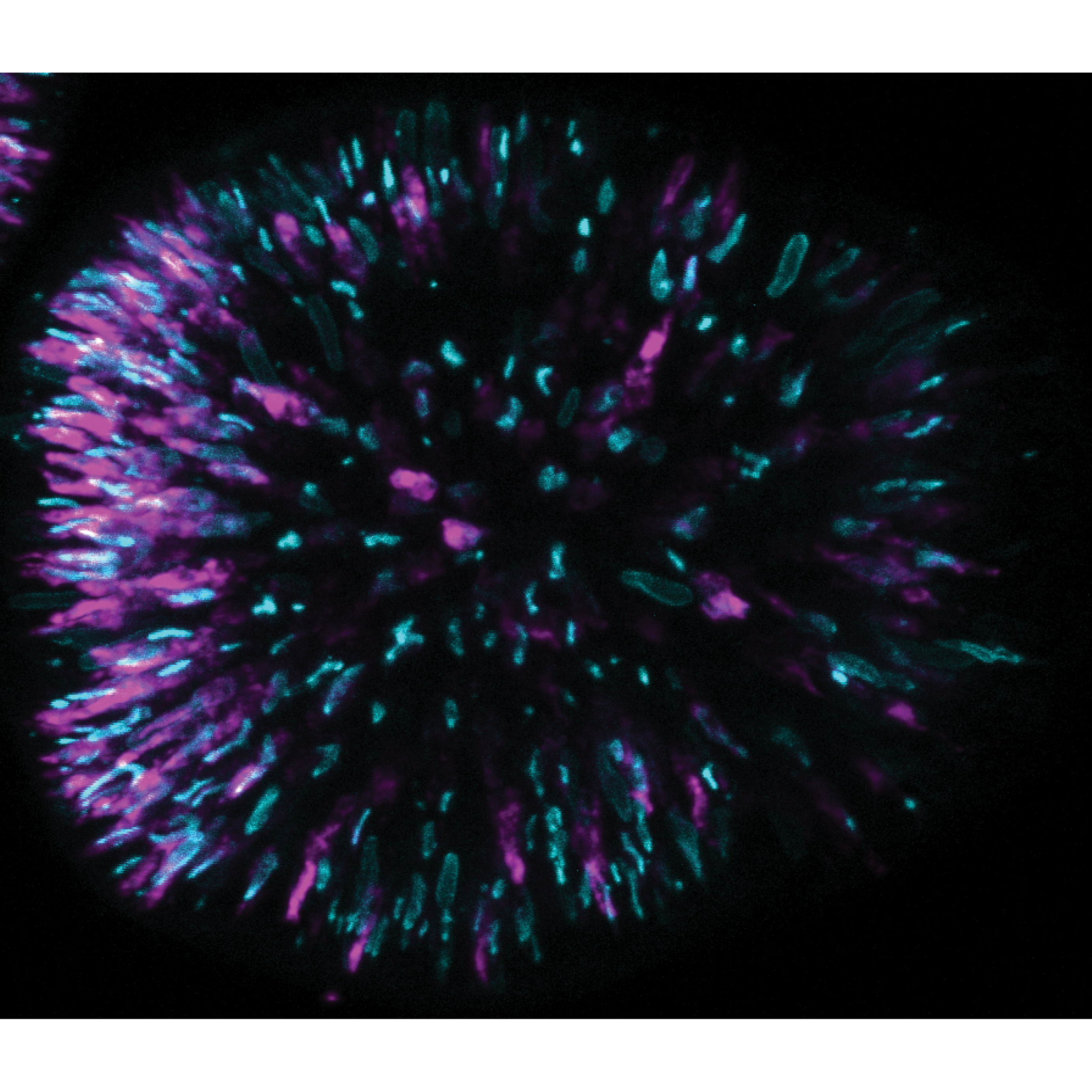 The Whitney Laboratory for Marine Bioscience
The Whitney Laboratory for Marine Bioscience

Congratulations to former Whitney scientist Dr. Leslie Babonis (currently an Assistant Professor at Cornell University), Dr. Camille Enjolras, Brent Foster, Dr. Fredrik Hugosson, Dr. Joseph Ryan, Dr. Mark Martindale and colleagues who recently published in Nature Communications, "Single-cell atavism reveals an ancient mechanism of cell type diversification in a sea anemone".

In an effort to understand how genes can drive the evolution of new cell types, UF Whitney Laboratory biologists have inactivated a gene from the starlet sea anemone and recreated an ancient cell type that is not normally found in this animal.
Sea anemones have various stinging cells, called cnidocytes, that have different functions such as piercing prey for feeding or sticking to surfaces so they don't get swept away by ocean currents. Piercing cells in anemones come in over 30 different sizes and shapes, and until this study marine biologists assumed these cells all shared a single "piercing" ancestor. But it turns out at some point in the starlet sea anemone's evolution, a gene called NvSox2 silenced the molecular decisions that led cnidocytes to become "sticky" cells and instead instructed them to become a specific type of "piercing" cell effectively inventing a new cell type.
When the gene is disabled, these "piercing" cells are restored to their ancestral "sticky" identities that have been forgotten in this particular anemone through its long evolutionary history.
These results suggest that single-gene switches driving cell fate have been around for a long, long time and provide a flexible molecular mechanism for animals to adapt to new and changing environments as needed to survive.
It's plausible—maybe even likely—that other types of "piercing" cells have a similar gene-induced amnesia blocking cellular memories of a distant past, offering a rich opportunity for biologists to explore this evolutionary mechanism in future studies.
Full Paper in Nature Communications
This paper was featured on the Nature Communications Editors' Highlights Page. The Editors’ Highlights pages aim to showcase the 50 best papers recently published in an area.
Photo caption: Developing stinging cells (magenta and aqua) in a larva of the sea anemone Nematostella vectensis.